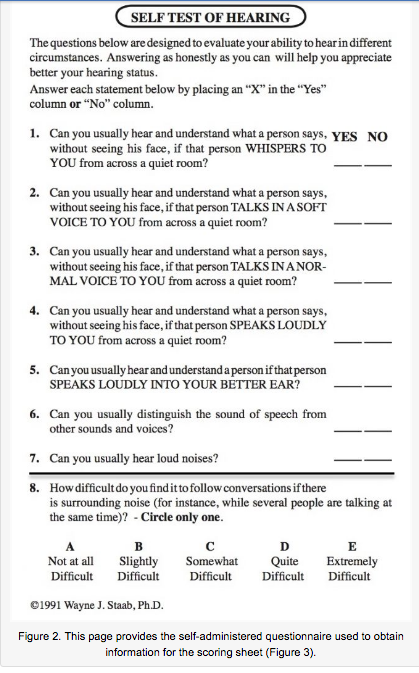Legalized OTC (over-the-counter) hearing aids are expected as a hearing-impaired consumer option. One of the arguments against this practice is that the potential purchaser has not had an audiogram from which to determine the type and degree of hearing levels to assist in the selection of the appropriate hearing aid, if such is to be recommended. However, serious discussion exists relative to the real value of a pure-tone audiogram for such selection, perhaps for the majority of individuals, especially based on the way pure-tone testing is currently conducted. What then, might be the role of a hearing self-test?
Self-Test of Hearing – Paper and Pencil
A number of years ago this author designed a paper and pencil self-test of hearing. The test, in the form of a short questionnaire, was designed to allow a consumer to evaluate his/her ability to hear in different circumstances, and that their answers would help them better appreciate and understand their hearing status. They could make their own decision as to whether they wanted to follow through more specifically on the results of the test with whatever hearing testing facility they wanted. What the test was intended to do was to inform them about what they could expect of their hearing, based on their responses. Because the person knew that their answers were personal, and that no one else would see them, they were likely to answer the questions more honestly than those questionnaires that request their personal information in order to get the results. The intent of the self-test is to provide a rapid, but reasonably accurate understanding of the person’s hearing status.
Figures 2 provides the questionnaire and Figure 3 provides the scoring information. The degree of loss as identified from the scoring chart, is explained in the text following the two figures. Read Blog – Learn more.

